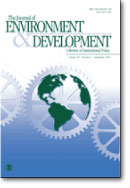Water Policy Networks in Egypt and Ethiopia

Autor(en): Samuel Luzi, Mohamed Hamouda, Franziska Sigrist, Evelyne Tauchnitz
Journaltitel: The Journal of Environment and Development
Reviewed:
Band: 17
Ausgabe: 3
Seiten: 238-268
Verlag(e): SAGE
Publikationsjahr: 2008
